If you’re searching for the world’s biggest gathering of people, India’s Kumbh Mela easily beats every record. Imagine standing shoulder to shoulder with a crowd so huge, it looks like a never-ending sea stretching for miles. But this isn’t just a random swarm; it’s a spiritual pilgrimage that brings together millions all moving toward the same goal: a holy dip in India’s most sacred rivers.
The Kumbh Mela isn’t your average festival. It’s held in a cycle across four different riverbank cities, and the sheer planning that goes into making sure everyone’s safe, fed, and guided is next-level. There are doctors, police, street food vendors, artists, and volunteers everywhere. Missed your group in the chaos? Don’t worry—the organizers have full-on lost and found booths, and even color-coded zones for easier navigation.
- What is Kumbh Mela?
- Why Does Kumbh Mela Happen?
- When and Where Does It Take Place?
- What Happens at Kumbh Mela?
- Mind-Blowing Numbers and Records
- Tips for Visiting the Festival
What is Kumbh Mela?
Kumbh Mela is the world’s biggest religious gathering, held in India. It’s a massive Hindu festival where people come together to bathe in a holy river, believing it’ll wash away their sins and bring them closer to the divine. The word 'Kumbh' means pitcher or pot and 'Mela' just means fair or gathering. According to Hindu mythology, the event’s origins come from a legendary tug-of-war between gods and demons over a pot of nectar that granted immortality. During the struggle, drops of this nectar fell at four spots in India—these are now the four places where Kumbh Mela happens.
The festival isn’t just about spiritual rituals. It’s an explosion of Indian culture with sadhus (holy men), pilgrims, tourists, and even researchers flocking to see what’s happening. You’ll see a wild mix of colors, crowds, makeshift cities, and temporary bridges built just for the event. Kumbh Mela hosts everything from mass prayers to enormous processions to public debates on religion and philosophy. If you’ve ever wanted to experience India’s energy and spiritual side, this is where you’ll find it.
Kumbh Mela isn’t held every year in the same place—it rotates between four cities:
- Prayagraj (where the Ganga, Yamuna, and mythical Saraswati rivers meet)
- Haridwar (on the Ganga)
- Ujjain (on the Shipra)
- Nashik (on the Godavari)
Each location has its own rhythm, crowd sizes, and local flavors, but the spirit of coming together remains the same. During Kumbh Mela, temporary tent cities pop up, with everything from medical tents to food stalls to cellphone charging stations.
When it comes to records, the numbers are jaw-dropping. The 2013 Kumbh Mela in Prayagraj (then called Allahabad) drew an estimated 120 million people over 55 days. That’s like the population of several countries combined! Here’s a quick look at some Kumbh Mela stats from past festivals:
| Year | Location | Estimated Attendance |
|---|---|---|
| 2013 | Prayagraj | 120 million |
| 2019 | Prayagraj | Over 100 million |
| 2016 | Ujjain | Over 60 million |
| 2015 | Nashik | 30 million |
| 2010 | Haridwar | 40 million |
The main draw here is the spiritual reward, but it’s also about community and tradition. You’ll find people who’ve traveled for days by train, bus, or even foot, just to take part. This is exactly why Kumbh Mela stands out not just on lists of Indian festivals, but across the world.
Why Does Kumbh Mela Happen?
The main reason behind Kumbh Mela is rooted in Hindu mythology. It's said to be about a cosmic battle between gods and demons over a pot of amrit—basically, the nectar of immortality. During the chase, drops of this amrit fell at four river-side cities: Allahabad (Prayagraj), Haridwar, Nashik, and Ujjain. People believe taking a dip at these spots during the Kumbh Mela washes away past sins and helps you reach moksha, or liberation from the cycle of rebirth.
This isn’t just a story; it impacts real life. Every 12 years, each of these cities hosts a massive Mela. There’s also an “Ardh” (half) Kumbh every six years at two of the locations. The dates are decided by astrological positions of Jupiter, the Sun, and the Moon, which means calendars shift each cycle.
But why do people care this much? Hinduism puts a huge emphasis on pilgrimage and purification. For many, this is a rare chance to be part of a tradition that’s been around for centuries. Sadhus, monks, families, and curious travelers all come for blessings, spiritual talks, and a feeling of connection. Some people call it the world’s biggest faith event—because, by numbers alone, it really is.
| City | Kumbh Frequency | Average Attendance (Recent Years) |
|---|---|---|
| Prayagraj | Every 12 years | 120 million (2013) |
| Haridwar | Every 12 years | 50 million (2010) |
| Nashik | Every 12 years | 30 million (2015) |
| Ujjain | Every 12 years | 30 million (2016) |
So, in short, Kumbh Mela happens because people believe these specific times and places make spiritual renewal and forgiveness possible. It’s less about the spectacle and more about a centuries-old promise of second chances.
When and Where Does It Take Place?
If you want to catch the Kumbh Mela in action, you’ll need to plan ahead—because this isn’t an annual thing. The Kumbh Mela happens on a rotating basis at four sites across India: Allahabad (now called Prayagraj), Haridwar, Nashik, and Ujjain. The catch? Each city gets its turn once every 12 years, based on a set of astrological rules tied to planetary positions.
The main Kumbh Melas (the full-scale ones) work in this 12-year cycle, but there’s more. Every six years, you get the Ardh Kumbh ("half" Kumbh) in Prayagraj and Haridwar. There are also mini versions called Magh Melas, especially in Prayagraj, happening every year, but the crowds aren’t nearly as massive.
Dates aren’t picked out of thin air. Organizers check the positions of Jupiter, the sun, and the moon. Seems complicated, but these dates have religious and historical importance going back over a thousand years. Here’s where and when each big Kumbh has happened or will happen:
| City | River | Next Big Kumbh Year |
|---|---|---|
| Prayagraj | Ganges, Yamuna, Saraswati (mythical) | 2025 |
| Haridwar | Ganges | 2034 |
| Nashik | Godavari | 2033 |
| Ujjain | Shipra | 2028 |
So, hoping to see this spectacle? Start checking local calendars and plans months ahead. Cities transform completely. Tented cities get built, extra trains and buses run, and the police are basically everywhere for crowd control. If you just show up, there’s a real chance you’ll be sleeping outdoors—so most folks book spots way in advance.
"Kumbh Mela is not just a religious event; it's a logistical marvel that tests the limits of human coordination," says Dr. Ravindra Singh, professor of Indian culture at Banaras Hindu University.
Peak bathing days (called 'Shahi Snan' or ‘royal bath’) are announced in advance too. Those days? Towns can swell with 20 to 30 million people at once. If crowds aren’t your thing, check the schedule to visit before or after those high-traffic days.
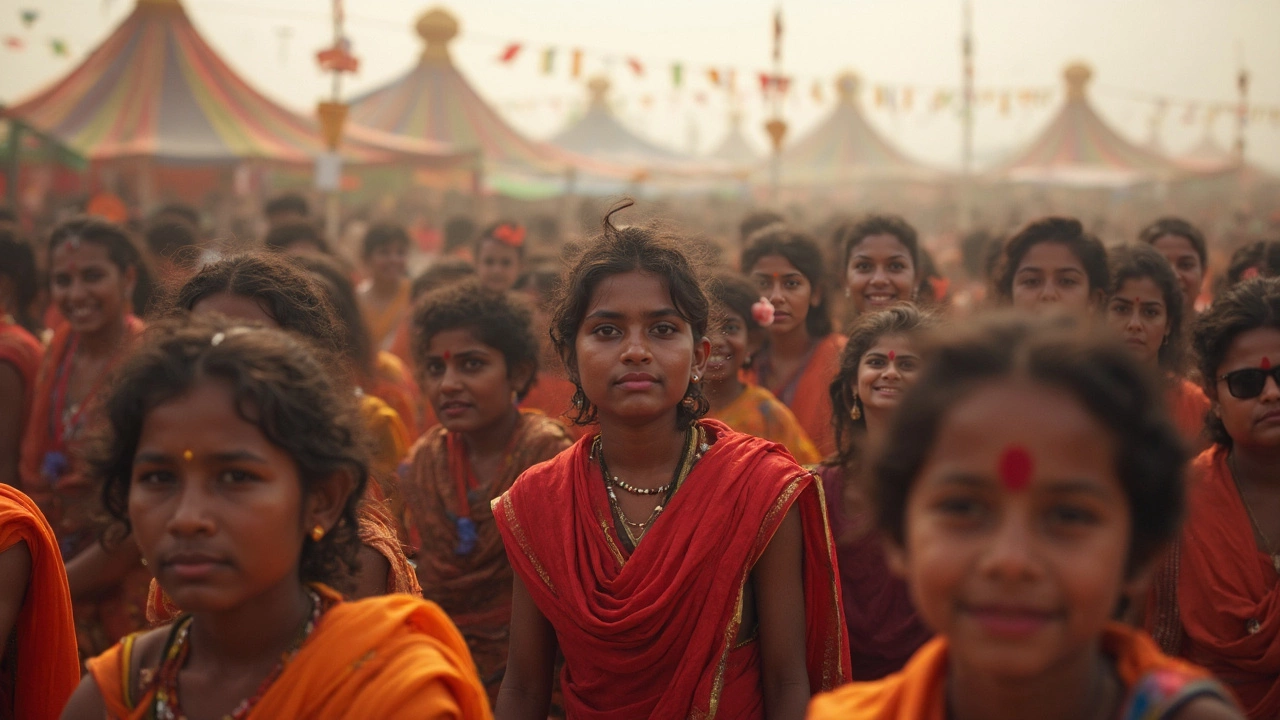
What Happens at Kumbh Mela?
Kumbh Mela is a festival like no other—think massive crowds, rivers of color, and a spirit of togetherness you just can’t fake. The most important ritual is the holy dip in the river. People travel from all over, believing that a single bath during the festival can wash away lifetimes of bad karma. This is the main draw, and you’ll see folks lining up by the thousands at sunrise, even in the coldest months.
It’s not all about taking a dip, though. The event is packed with processions, spiritual talks, yoga camps, free meals for everyone (langars), and camps set up by saints. Sadhus (holy men) are everywhere—some with ash smeared on their bodies, some performing wild feats of endurance. You can join group prayers, listen to music, and even watch debates on philosophy right in the open.
- Shahi Snan (Royal Bath): The grand highlight, where monks and religious leaders lead the first plunge into the water.
- Cultural performances: Folk dancers, musicians, and artists from every corner of India perform on makeshift stages.
- Akharas: Groups of wrestlers and spiritual sects set up camps where they display skills and teach about their traditions.
- Exhibitions and fairs: Stalls selling everything from books and food to spiritual trinkets, creating a buzzing atmosphere.
- Mass feasts: Huge tents serve thousands of people free food, cooked non-stop by volunteers.
Just to give you an idea of the scale, check out these numbers from the most recent Kumbh Melas:
| Year & Location | Estimated Visitors | Litres of Water Sanitized Daily | Free Meals Served per Day |
|---|---|---|---|
| 2019 Prayagraj | ~240 million | 10 million | 500,000+ |
| 2013 Allahabad | ~120 million | 7 million | 300,000+ |
No wonder the Kumbh Mela has made it into the record books—not just in India, but worldwide! You’ll spot photographers, documentary crews, and travelers from every continent. Everyone’s drawn in by the scale and the energy.
If you’re thinking about visiting, know that while there’s plenty to do and see, you’ll need to plan for crowds and stay prepared. Comfortable shoes, basic first-aid, and lots of patience are non-negotiable. But for most people, the sights, rituals, and community vibe make it a once-in-a-lifetime experience.
Mind-Blowing Numbers and Records
When it comes to massive crowds, nothing comes close to Kumbh Mela. This festival has actually landed a spot in the Guinness World Records for being the biggest human gathering on the planet—no exaggeration.
The 2013 Kumbh Mela at Allahabad (now Prayagraj) became the talk of the world for its insane numbers. On just one important bathing day (Mauni Amavasya), over 30 million people took part. Wrap your head around that: it’s like the whole population of Australia all showing up for a single day at one event. Across the two-month festival, the total attendance reached over 120 million. And it’s not a one-off—every Kumbh Mela draws jaw-dropping crowds, whether at Haridwar, Nashik, Prayagraj, or Ujjain.
Here’s a look at some eye-popping stats from recent Kumbh Melas:
| Year | Location | Estimated Peak Attendance (single day) | Total Attendees | Notable Record |
|---|---|---|---|---|
| 2013 | Prayagraj | 30 million | 120 million | World’s largest gathering |
| 2019 | Prayagraj | around 25 million | 120 million | Most visitors in a single modern event |
| 2010 | Haridwar | 7.5 million | 50 million+ | Massive crowd control challenge |
The numbers are just part of the story. Authorities set up entire “pop-up” cities for the duration, with thousands of toilets, miles of temporary roads, and massive medical camps. During the biggest years, over 40,000 policemen and volunteers help keep things running. There’s even a massive lost-and-found mechanism, since getting separated in the crowd is almost guaranteed.
- The event is visible from space. Satellite photos actually show the swelling crowds along the river banks during major bathing days.
- Over 200,000 tents get pitched for sadhus, pilgrims, and tourists, making it one of the largest temporary settlements in the world.
- Public transport ramps up to historic levels. Special trains and buses run back-to-back so people can get in and out smoothly.
There’s just nothing else on the planet that pulls off these numbers, and with this much organization. It’s the biggest crowd, but also one of the best-managed festivals you’ll see anywhere.
Tips for Visiting the Festival
Making your way to the Kumbh Mela sounds wild, and honestly, that’s accurate! But a bit of prep goes a long way. Let’s break down some must-know advice that’ll keep you comfortable and actually enjoying the chaos instead of just surviving it.
- Plan your timing: The biggest surge happens on the main bathing days—called Shahi Snan days—when crowds balloon past 30 million. If you want to experience the energy but hate feeling squeezed, visit on less auspicious days.
- Accommodation: Hotels fill up crazy fast. Budget options, ashrams, and official tent cities get snapped up months ahead. If you’re booking online, cross-check details with the official Kumbh website. Festival tent cities are basic but secure, often with shared toilets and simple food. If you’re on a tight budget, look at dharmashalas or consider dormitory stays.
- Getting around: Forget Ubers and autos near the main site. Shuttle buses and designated walking routes are your best friends. Bring comfy shoes—you’ll do a lot of walking. Arrive early in the morning if you’re headed to the riverbanks for a dip.
- Stay healthy: Stick to bottled water. With so many people, minor stomach bugs are common. Pack a small first aid kit: paracetamol, hand sanitizer, and basic meds. The festival site also has plenty of public health kiosks.
- Keep valuables safe: Petty theft can happen in huge crowds. Carry only what you need—a little cash, ID, and your phone in a zipped pouch. Use waist pouches instead of regular backpacks if you can.
- Dress comfortably and modestly: Cotton is your friend, as it gets hot fast by the river. Bring a small towel or scarf to cover up or wipe off after bathing. Most folks wear simple Indian attire, so you’ll blend right in and stay cool.
- Stay connected: Indian mobile networks are usually fine, but so many phones in one area can make things glitchy. Agree on meetup points if you’re with a group and snap a photo of any signposts to help you find your way back.
- Respect local customs: Kumbh Mela is all about faith and traditions. Don’t take selfies while people are praying or bathing. Always ask before taking close-up photos.
Here’s a quick table to keep handy on the busiest bathing days to help you plan:
| Main Bathing Day | Estimated Crowd |
|---|---|
| Mauni Amavasya | 30-50 million |
| Makar Sankranti | 10-15 million |
| Basant Panchami | 10 million |
If you’re looking to lock in your experience, keep an eye on the official Kumbh website or Indian tourism updates. And if you want a taste of the action without the crowd crush, the days just before or after these major dates are your best bet.
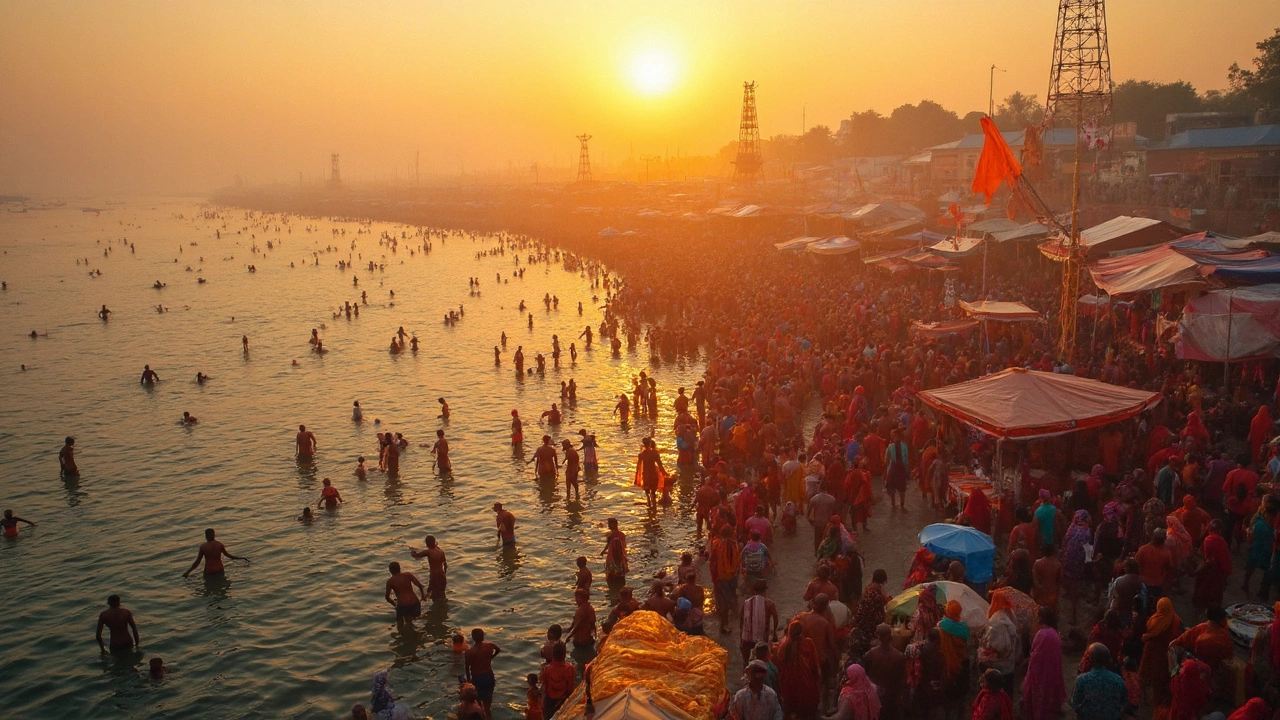

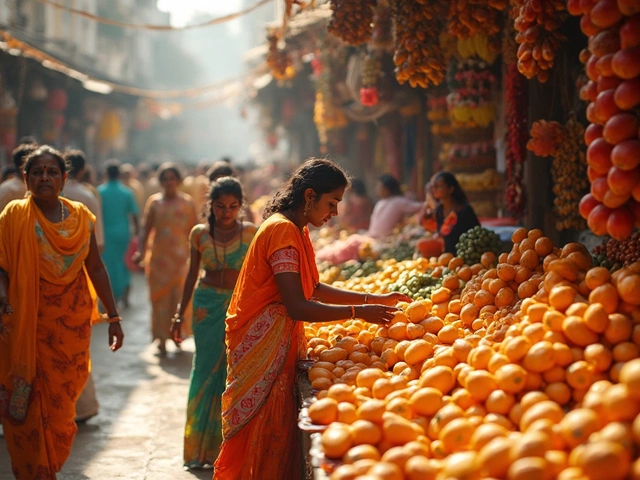
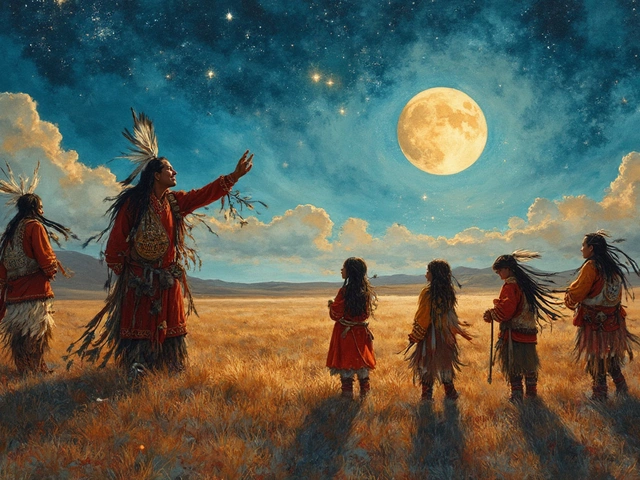
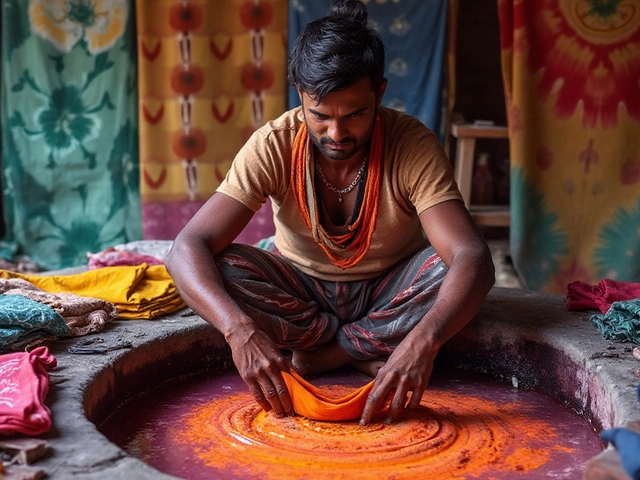
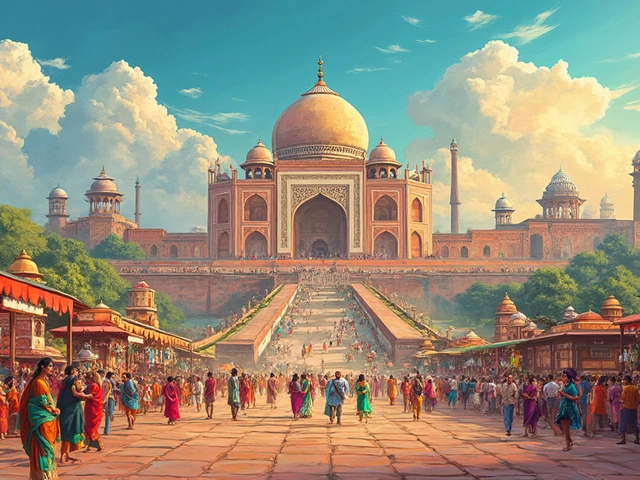
Write a comment